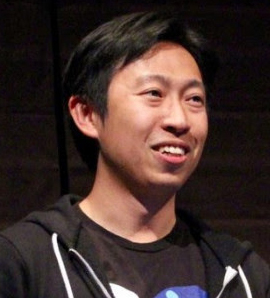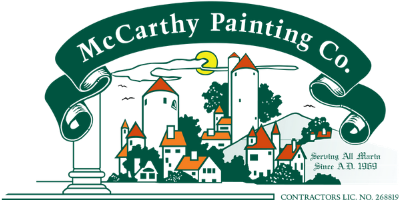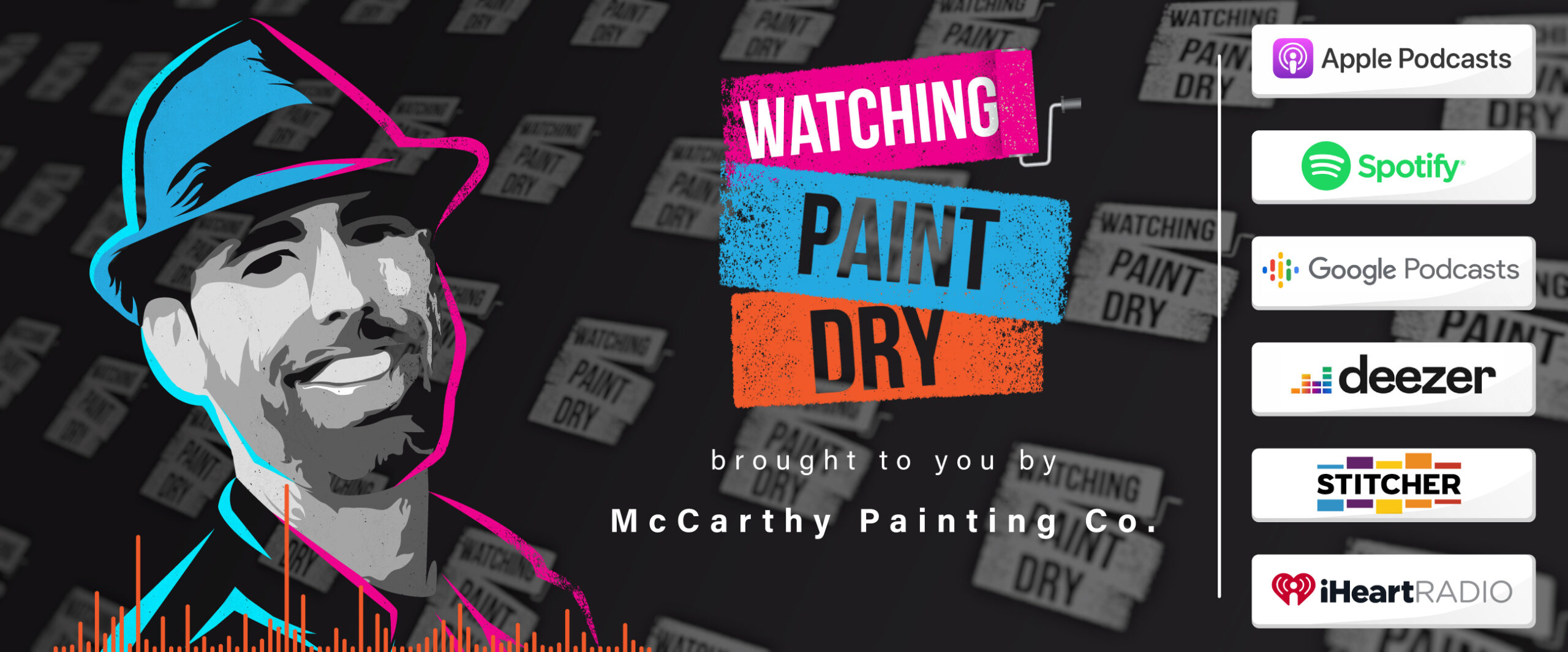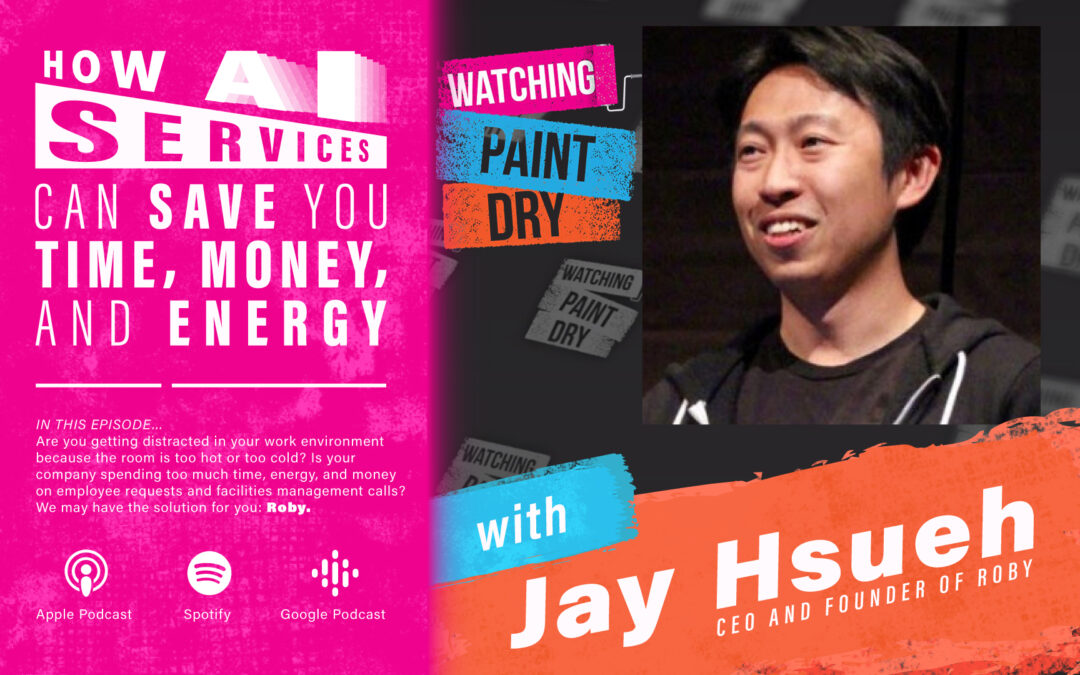
Jay Hsueh is the CEO and Founder of Roby, a conversational AI service that streamlines the modern office. Roby’s mission is to create an engaged, productive workplace by making customer operations efficient, simple, and personalized. Before Roby, Jay served as the Analog Design Engineer for NXP Semiconductors and participated in Techstars’ Alexa Accelerator program. He has also founded two other companies, LiWi LLC and Room2music. Jay attended the National Cheng Kung University and the University of Southern California.
Here’s a glimpse of what you’ll learn:
- Jay Hsueh discusses how Roby is transforming facilities management
- What are the challenges that Roby tackles in the workplace?
- How the Roby platform improves productivity
- Jay’s path from engineer to founder
- Jay breaks down Roby’s processes
- How can service companies and small businesses use AI?
- Jay’s thoughts on the future of AI
- The people Roby aims to hire
In this episode…
Are you getting distracted in your work environment because the room is too hot or too cold? Is your company spending too much time, energy, and money on employee requests and facilities management calls? We may have the solution for you: Roby.
The AI service hub, Roby, is transforming businesses across all industries. The platform automates employee requests and uses energy-saving equipment and data analytics to keep everyone in the office comfortable, happy, and productive — while saving your business money. So, how exactly does this service work, and how can you implement the software into your company today?
In this episode of Watching Paint Dry, Greg Owens and Katrina Stephenson sit down with Jay Hsueh, the CEO and Founder of Roby, to talk about how the platform is helping companies become more efficient. Jay breaks down the Roby process, shares examples of how the software is supporting innovation for both legacy companies and small businesses, and talks about his predictions for the future of AI. Stay tuned!
Resources Mentioned in this episode
- Greg Owens on LinkedIn
- Katrina Stephenson on LinkedIn
- McCarthy Painting
- McCarthy Painting Contact No.: 415-383-2640
- McCarthy Painting Email Address: info@mccarthypainting.com
- Jay Hsueh on LinkedIn
- Jay Hsueh’s email: jay@tellroby.com
- Roby
- Entrepreneurs’ Organization
Sponsor for this episode…
This episode is brought to you by McCarthy Painting, where we serve commercial and residential clients all around the San Francisco Bay area.
We’ve been in business since 1969 and served companies such as Google, Autodesk, Abercrombie & Fitch, FICO, First Bank, SPIN, and many more.
If you have commercial facilities in the San Francisco Bay Area and need dependable painters, visit us on the web at www.mccarthypainting.com or email info@mccarthypainting.com, and you can check out our line of services and schedule a free estimate by clicking here.
Episode Transcript
Intro 0:03
Welcome to the Watching Paint Dry podcast where we feature today’s top facility managers, property managers and property owners talking about the challenges and opportunities of managing hundreds of 1000s of square feet of real estate and how to beautify and improve their properties.
Greg Owens 0:21
Now, let’s get started with the show. Hello, everyone. This is Greg Owens with the Watching Paint Dry podcast where we have been having this series on facilities management, building construction, building owners, and property managers and all the support services in that entire community, which is about a $2 trillion global enterprise. And this episode, as all the episodes have been, is sponsored by my company McCarthy Painting. McCarthy Painting has been in business since 1969. We paint both residential and commercial projects throughout the San Francisco Bay Area. We’ve done work for many, many different types of companies, including, what did we do? We just did a bunch of stuff for sng carpet out of out of Pleasanton. And we’ve done work for Google spins, zooks and many, many others. If you would like to learn more about our business, go to McCarthypainting.com or email info@McCarthypainting.com. And I’m really excited to have Jay Jay, how do you pronounce your last name? Hsueh? Set as my Hsueh? Hsueh? Yeah, yeah. Jay Hsueh on the on the on the podcast with us. And he is the owner and founder of Roby, which is an AI backed company. And I’m really excited to find out more about that. But how Welcome to the podcast. Jay, how are you doing today?
Jay Hsueh 2:08
Doing great. Thanks for having me. This is pretty exciting. Yeah.
Greg Owens 2:11
And we also have Katrina Stephenson on on the podcast, too. And she works for McCarthy Painting, and she sometimes chimes in with some questions, too. So Jay, what’s how’s things going? You’re in Seattle right now?
Jay Hsueh 2:14
I’m in Seattle. Yes.
Greg Owens 2:27
Awesome. And how are things there? I kind of like to get I like getting my news. I don’t watch the news or anything like that. And I like getting my news from people like on the ground in different cities and what’s going on in Seattle.
Jay Hsueh 2:39
Seattle has been great. I Seattle have the past summer. I mean, it’s a little bit sad at the end of the summer. But you know, we always joked about that, you know, you have is like three months great summer and then suffering for another nine months and rainy, but it’s totally worth it.
Greg Owens 2:55
But I hear that global warming has been good for Seattle. Like it’s been bad. Oh, yeah. Oh, yeah. That is crazy. That is really crazy.
Jay Hsueh 3:03
Yeah, this is like the first time and then remember last year was pretty cool, too. So I feel Yeah, the climate change things are getting serious for sure.
Greg Owens 3:12
Right. Right. Right. And and how it has, like, no, like income in the Bay Area, we had to lock down again, a bit because of COVID. How has it been up there in Seattle?
Jay Hsueh 3:25
I think overall is okay. I think, you know, most of the people like like our employee, they’ll vaccinated. And, you know, since kind of back to normal, I would say semi normal.
Greg Owens 3:37
Right. Right. We’ve gone back to wearing masks indoors and that kind of thing out of I don’t know what a lot of fear and that kind of thing here in California, but California always likes to be, you know, on a super safe side of things. So, right, right, right. I think that’s good. Yeah. So, Jay, tell me about you’re the founder of Roby, tell me and it’s an AI? Yeah, company. You mean you will use AI but you’re an AI sort of company to help facilities and filled facilities management?
Jay Hsueh 4:11
Yeah. Essentially, so Roby is office automation software for the company to save the operational costs. So
I’ll give you an example. Like you know, companies spend actually spent quite a bit of money to solving the problem for the employee. So good example compensated like hot/cold request, right, you know, every hot/cold request actually cost quite a bit of money for for the company. If you really think about it, you hire someone facility engineer, probably around 60,000 US dollar a year or somewhere like that, and then that equal to the $30 per hour. So every time one request, like they deal with 20 minutes of $10 $10 $10 each time right and really interesting now is like you hire facility engineer, you’re not asked them to deal with hot/cold. All right. That’s It’s not their job, like they actually need to deal with much more complex things they need to do. So what we essentially what Roby does is like we we tried to get rid of those distraction for facility engineers to fully automated those type of requests. So for example, lighting adjustment, like hot/cold call, like I just mentioned that on so yeah, so that’s essentially what we do.
Greg Owens 4:33
Let me Yeah, so so let me get this straight. So you guys have like, probably a ticket system where people can say that, like, hey, my office is too hot, or, you know, the lighting in my room is not, not bright enough, or the light is out, or something like that. And it’s going through into the into the system. And the AI starts tracking all these things, and then figures out before they’re going to happen, why they’re happening, so that you can put things in on the front end so that they’re not, they don’t happen as often. So it doesn’t waste the time of the facilities manager every day to deal with each and every one of these individually.
Jay Hsueh 6:07
Yes, so here’s how it works. It’s like, so Roby, we connected with Microsoft Teams, or Slack. So under employee, I have a slide. And then I see rubies, almost acting like you’re part of your coworker. So you can find Roby, you direct message to Roby to say, Hey, I feel too hot. And then Roby asked you, where’s your location, and then you buy your location? And then based on that we do the temperature change? and all that. And your point? Yeah, and then even better, so even better, it’s Yeah, it’s fully automated. So there is no human involved. And then there’s no ticket involved. And that’s essentially our value proposition to the company as well as, hey, you don’t you know, compare with you want to hire a new facility engineer versus using the software to solving the problem. I think most people choose software is quicker, right? And then the people focus on more complex issues, rather than this. Right? And, yeah, and then to your point, like the AI piece of it is like the more complaint, you talk to the Roby. So, for example, Roby will be understanding like, okay, Tuesday afternoon in this area, right. And also people, for example, complain about is too hot, and then you can change your schedule. So it’s like a more data driven decision. So that’s, that’s also another advantage.
Greg Owens 7:17
Oh, man, that is, that is a game changer in so many ways, right? Because you’re taking there’s, there’s crazy amounts of money being spent on entire software, ticketing systems, and that kind of stuff, just to keep track of every one of these, what you’re saying is like, No, we could just do this within slack in real time, make these adjustments and change these things.
Jay Hsueh 7:13
Yeah, and the major problem of like, the traditional way of doing like, you know, our ticketing system for now, customer feedback. So there’s a two issues. One is from the employee point of view. So I’m the employee, I just have a very simple request form from their point of view. It’s a simple request Come on, it is a temperature change. Why take forever? Why take one hour right? On the other side of facility, they’re also frustrated like, come on, man, I have so many things I need to do. And now you give me another like hot/cold call every two hours like nice crazy, right? That’s insane. So that’s why it takes so long and then so the frustration of for an employee that that that actually affect their productivity. So if you really think about especially tech company, you mentioned about Google right? How much money they spend on employee right? They The only things they want them to do is to be productive. And on the other side is how do they are thinking about how do we have this facility services make it so response they have a much better service response time and satisfaction so those are the two sides of the KPI can be satisfied.
Greg Owens 7:13
That’s great. It makes so much sense to me thing Yeah. Katrina Did you have a question with like your? Well,
Katrina Stephenson 9:16
I’d like that here in our office. Yeah, slack have done it. Literally the air conditioners like five feet from your sweater sitting. I still want Roby.
Jay Hsueh 9:34
interesting piece like there is a very common question when people asking us these are like what if someone feels too hot, the other one feel too cold in the same area. And that’s that’s really interesting. So I’m not a facility management background. And when I first I hear, hear this I would my miles blow is because most of the facility management they actually disable the stuff Then. So it’s really interesting. And then the way they describe the problem is really interesting. It’s like, because people don’t know your temperature, which is so true. You walk into the room, you feel too hot. What do you do? You pound it. You just found it. I mean, I do. And then, and then half hour later, Your call is all good. But and then you left the meeting room and next person comes out, oh, my God, it’s freezing, right? And then you come back. So he’s like, constantly heating and cooling. So we are not talking about just like, constantly, you know, for this, like heating and cooling, but that’s the energy consumption. Yeah, it’s like, there’s a lot of energy waste. And then on the other hand, nobody’s satisfied, right? And then they feel like, Okay, why, why is so hard to get, you know, they’re comfortable. So I found is super fascinating. And then so when we design Roby, we don’t allow people to say, I want to what degree, you can only say I’m too hot and too cold. And then you regulate it in the backend. So for example, you’d like with a one hour one, people say too hot, the other people say too cold, we actually find a middle point. So it’s really interesting. And then, and then we also find some interesting side as well as like, is more psychological. So for example, in order to make the the employee feel really satisfied. Now sharing the secret is kind of interesting. So we actually turned a fan to maximum value. So it’s really cool is that when you interact with Roby and feel too hot, two seconds later, you the fan is like, Okay, and then people say, oh, okay, like logically. Yeah, psychologically, you feel cooler already. And then we turn off the fan. So the, and that actually driving the users and especially quite a bit, so I found those kind of, you know, really fascinating.
Greg Owens 11:57
Yeah, cuz we’re, as a species, we can be impatient, right? We want to know that our request was heard. And, you know, you put it into a ticketing system to what you said earlier, you know, it could be two or three hours later, that somebody gets back to your and says, Hey, we made some adjustments. How’s that feeling now? And you’re like, Man, I’m not even in that office anymore. Yeah, yeah. Well, you’re saying is is like, like, Well, no, I send to the slack. I hear the fan Come on. That’s great. No matter what the temperature is now, I feel heard.
Jay Hsueh 12:35
That’s exactly that’s, that’s, that’s a really interesting part as well, is like we literally turn on the fan first, before we actually change the temperature.
And then, psychologically, and any kind of talking point as well, right? As a pro user, oh, my God, this is so cool. This Roby things right? And then that that really helps the adoption as well. And then in a beginning, when we started Zuko Katrina, you mentioned about the logo being cute. That’s why what a reasonably designed like this, like a super friendly to the employees. So when we make an announcement internally in our customer site, we pretty much say, Hey, here’s a Roby. This is your new hire your new coworker, where you can talk to him. So this kind of characteristic is also possible in terms of adoption.
Greg Owens 13:22
Alright, so you have hot and cold, you have lighting, I can see how those are what other types of things can Yeah, Roby take care of?
Jay Hsueh 13:33
Yeah. So since you mentioned that, we recently just release a third party API. So we soon we we kind of soon realized one thing. So we are a really small company, we can really do every single use cases by all all by ourselves. So we release the API for the third party to integrate it. So for example, the energy saving solution to integrating with Roby. So the advantage is Roby is already connected to a building already. So for example, sensor data, metre data or even a second live in there, right? So for example, you can change the schedule of the HVAC based on occupancy data to save energy so so we don’t have to do it by ourselves as third party connected to Roby will, will, will do the trick so something like that, like energy saving, like we equipment, maintenance, and data analytic. Those are like sweet topic, like pretty hot instantly.
Greg Owens 14:35
Yeah. And so that makes that makes a lot of sense, because there’s just way too many manufacturers of equipment and way too many ages of equipment for you guys to do the programming for everything. Yeah, and so like a company like crane that makes HVAC equipment and that kind of stuff. They they can have their own API using your system to control or handle the maintenance of their products and they can decide like, Well, here’s the sweet spot across this many buildings that we want to make sure that we can start having this ability to offer as a service, or as an add on to what we already have out there.
Jay Hsueh 15:16
Exactly. So we got kind of, um, so now Roby become a layer between commercial building and cloud services. So the so that API layer, basically translate those control command integration for API. So so that opens up a lot of new innovation. So biggest, most of the software company, like myself, we don’t have the background, ah, back lighting and all of that, right. So but now you understand it, like, you know, software company can just focus on the API integration to create those innovation, that’s really cool. And on the other side is like most of the startups in this field are suffering for one thing is about installation. So mostly, most of the installation is very customized and take a long time. So that causing two issues. One is like you need to charge the upfront cost to your customer. So it’s really interesting is that a lot of companies, some some of the company, for example, in SAP project is good example is like, they charge customer for 50k to set up a tool first, and then you need to pay another like six months of consulting fee, just for the PLC project, right. So it’s really funny as I, before you prove out your solution can actually save money, you actually need to charge upfront 60 to 80k to your customer. So that’d be kind of hurdle as a customer, right? Why Why should I invest so much in the beginning? You know that that’s one thing? And then secondly, is it hard to scale up? What a startup by doing that, and then we try to solve that problem, provide that API layer, so the company will be super easy to deploy their technologies.
Greg Owens 16:54
Right, right. And so I imagine that within your company, you have two different sort of, maybe more marketing channels. One is to people that have goods and services that you’re that you Roby could bolt on to, let’s say, or be that middle layer. And then also, like letting the world know that you exist. And so that facilities managers want one want this in their in their system.
Jay Hsueh 17:23
Yeah, yeah. So we kind of so our strategy is like this. So it’ll be initial use cases about h back and lighting, let’s put this way. It’s almost like iOS, us on people.
Greg Owens 17:37
It’s easy for you to integrate. It’s easy, for example, not easy, but I mean, complicated stuff, but it’s not as hard as other
systems.
Jay Hsueh 17:46
And it’s a common problem. It’s very, very common, like, hot/cold call is one of the top reasons
Katrina Stephenson 17:51
And everyone uses slack. At this point. I mean, we do,
Jay Hsueh 17:56
like a Microsoft team does push to Yeah, those two are pretty dominant right now. Yeah. Especially after COVID actually, because most of the companies trying to create this like a touchless work environment. So he’s trying to remove as much touching point as possible. So thermostat, like switch now you can completely replace by your personal device. So that’s another selling point was fading is
Greg Owens 18:20
right. Right. makes so much sense, man, it’s so cool. You know, and I going back to what you were saying about the placebo effect to just hearing that fan go on. I know that for a long time, you know, the inside the elevators, when you have that button that you can press that closes the door. All right, a lot of elevator companies a long time, I don’t think they do this anymore, but a long time ago, they just disconnected that or didn’t connect it until you really felt like you were doing something really good. And I’ve heard the same thing about traffic lights, like the you need to have that button to get you to walk but the things I like a whole timer depends on the car’s car flow and all that stuff. But they put that there so people feel like they’ve you know, they’ve done something and it’s kind of change. It’s important
Jay Hsueh 19:09
it is important and it is a really interesting point you just mentioned that because we do some study about this this like so we talking about productivity right? So productivity get affected is because your emotion so for example you feel frustrated or you feel something that that that is the one actually causing you it’s not actually the temperature causing your your productivity goes low, right. So So really, it’s just a fact it’s like, you know, how do you create that services that facility services make the employee feel like okay, super responsive, nice services, nice people and then have a great experience. And then even almost looking forward that next time have interaction with Roby or with the facility team, right. That’s the goal for everyone.








